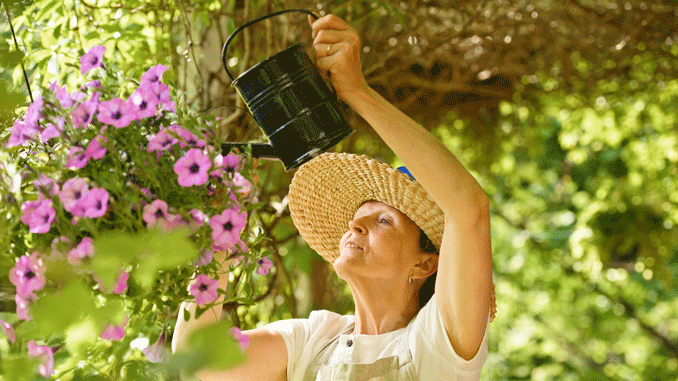
Gardening can be such a powerful outlet for stress relief or boosting a bad mood, but as we age the up-and-down and added pressure on hands and knees can become troublesome for joints and even lead to pain that affects daily life. While there are a lot of tools people can utilize to reduce this pain, some seniors may actually forego gardening because It has become too painful. Another option, however, is to create a vertical garden. Vertical gardens can be built from scrap wood or a full kit can be purchased in-store or online. Either way, a vertical garden will keep you off your knees and largely allow you to garden standing up. Vertical gardens are different than their ground-level counterparts, so before you jump in with both feet, read our tips for helping your vertical garden grow.
The Right Tools
With help, it’s not hard to pull off a vertical garden in your backyard and you have options to consider. Use wood and build planter boxes on a fence to house small plants, herbs, and vegetables; buy pre-fabricated containers such as plastic or wooden tiered raised garden boxes or felt hanging containers to organize your goods in; or put up scaffolding against a wall and create an eye-catching centerpiece that offers more design than functionality. If you don’t have a good fence or wall to work as the support, opt for a stand-alone system. If you get fancy with it, some of these tiered systems even have built-in irrigation, or you can add some yourself.
When choosing your planter, it’s important to consider what you will put in it. Eric Firpo, co-owner of In Season in Stockton, suggests containers that are 8-10 inches deep to house a variety of plants.
Choose the Right Plants
Eric says the key is using plants that have shallow roots. This includes some flower varietals, lots of herbs, vegetables including spinach, kale, and beets, and even strawberries. Basil can grow really tall, so keep in mind placement of your plants on the different tiers and ensure each one has enough space to thrive. “As in any garden the spacing is… important to think about before planting,” Eric says. “You’ve got to think about how big that plant is going to get and how long the roots are.”
It can be helpful to organize your planters and map out everything you will grow before planting a single seed. If you’re hoping to start a blooming flower bed, select plants with shallow roots that will not grow too tall. The tallest plants should go on the top tier. Or, if you’re focused on an edible garden, buy a felt hanger and plant a variety of herbs used on a regular basis. If you’re using the bounty, you’ll keep cutting the plants down to size.
Treat It Well
A vertical garden, like any container garden, is going to dry out faster and therefore require more watering. Eric says on hot days, you’ll have to water a vertical garden at least every other day, if not daily. A built-in irrigation system, of course, can take some of the work out of a vertical garden.
Other necessities include good potting soil and fertilizer. Eric recommends an organic soil with organic fertilizer already mixed it. In addition to drying out quicker, nutrients also leech out faster in a vertical garden. “You want to make sure the fertility of the soil is high so the plants have the opportunity to thrive,” Eric says,
In Season
215 E. Alpine Ave., Stockton
(209) 949-2499
Inseason.Store

